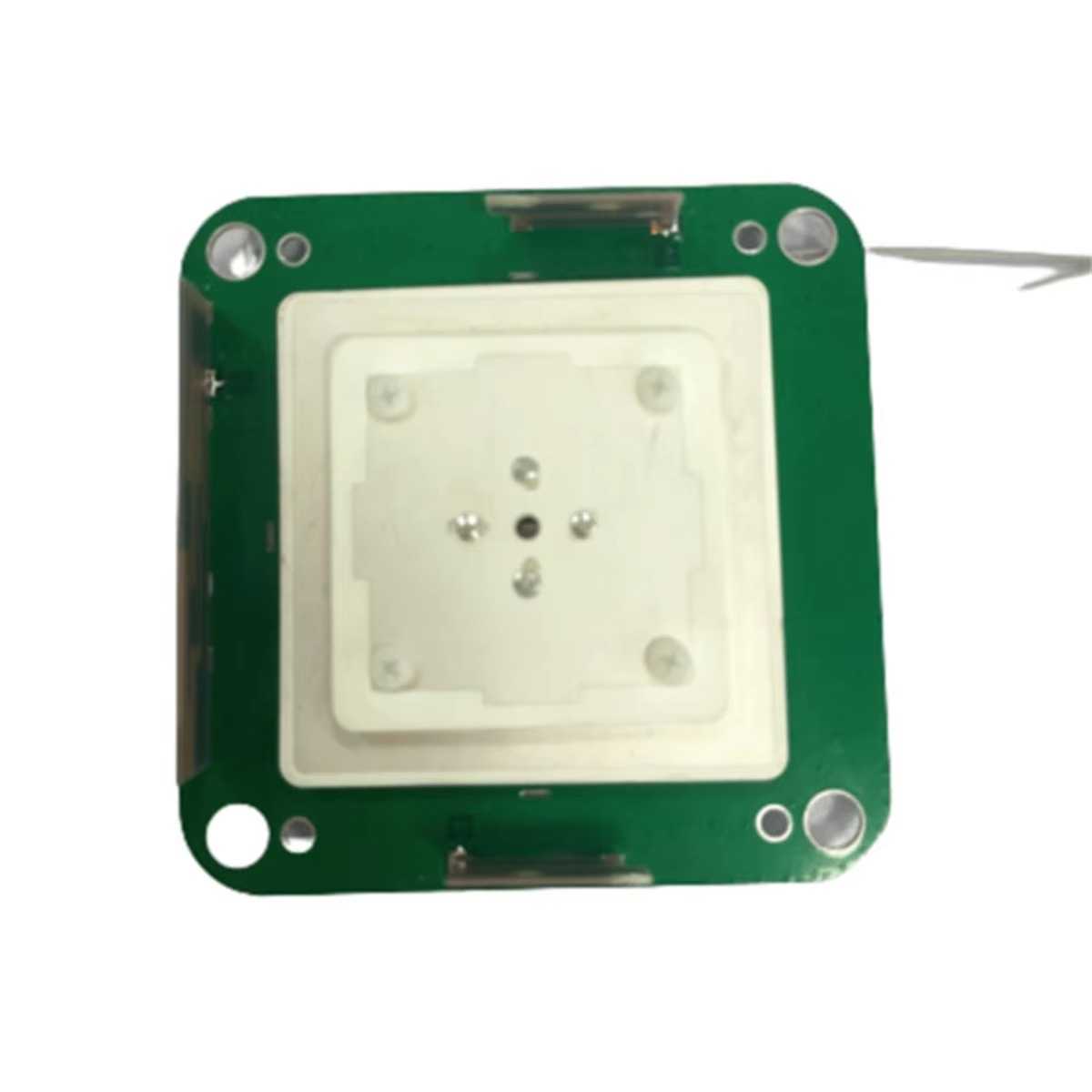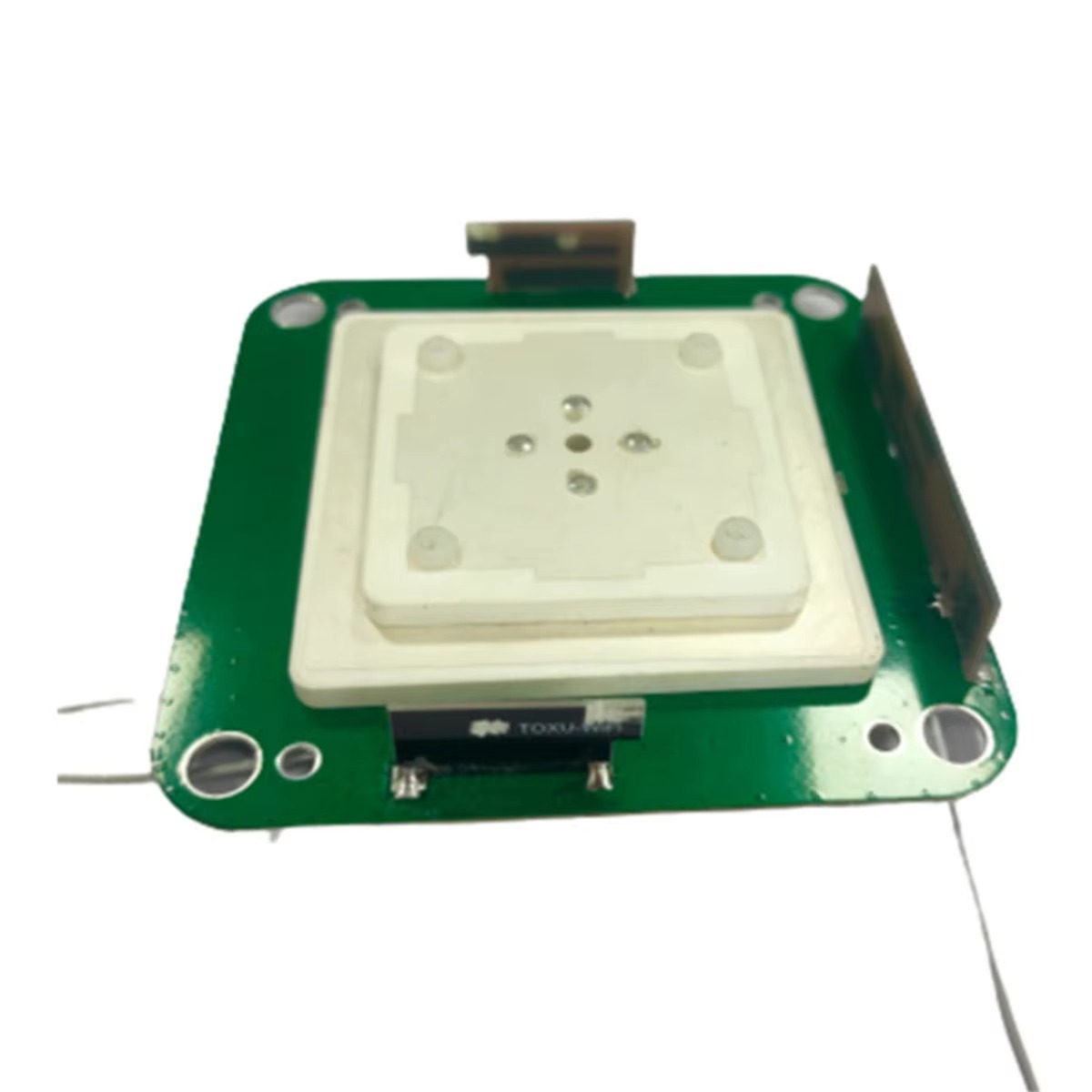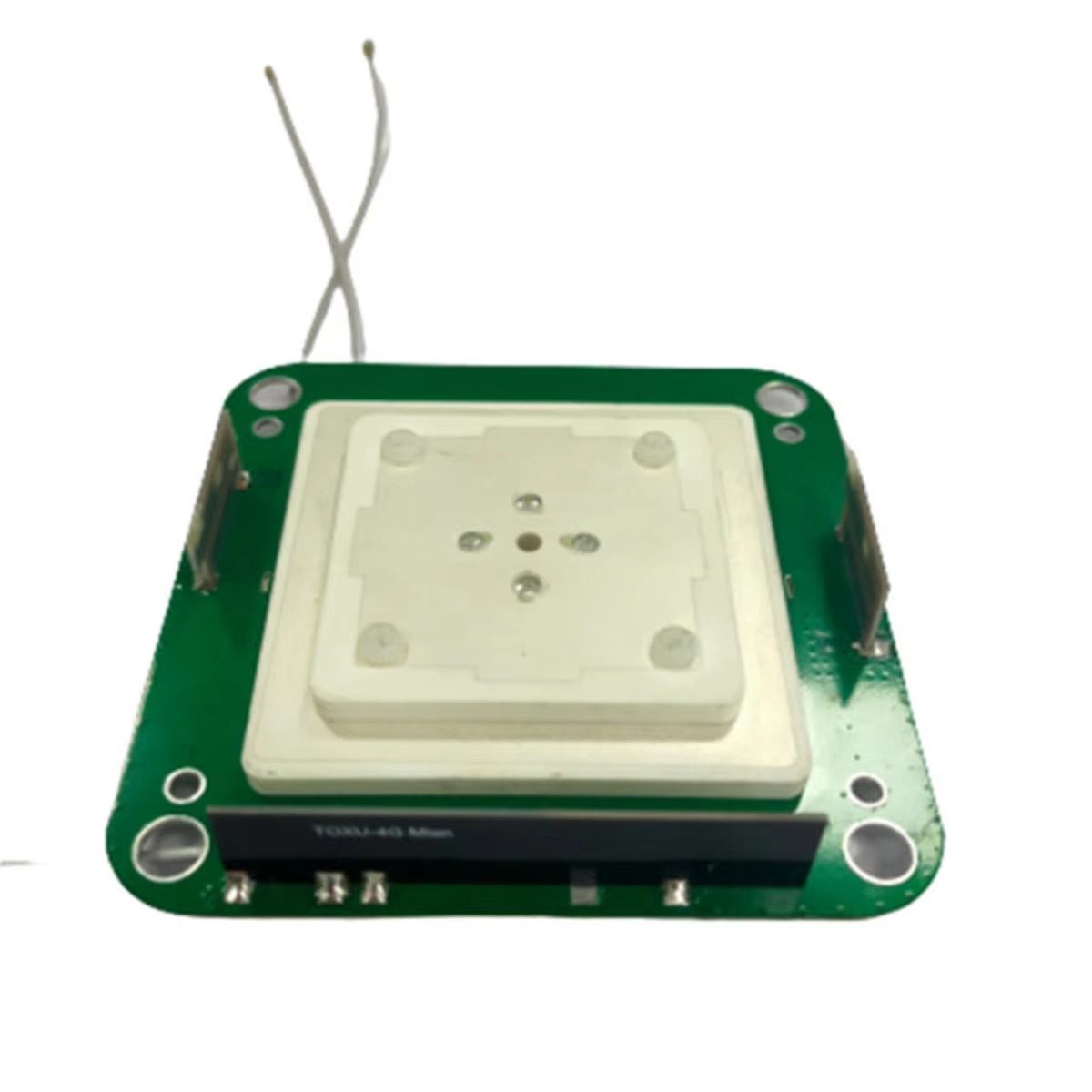Waterproof agricultural GNSS antenna modules are already transforming a wide range of agricultural tasks, from field preparation to post-harvest analysis. As technology advances, their applications will expand further, driven by innovations in automation, IoT integration, and sustainability. This section explores current key applications and emerging future trends.
5.1 Current Key Applications
5.1.1 Precision Field Preparation and Planting
One of the most common applications is precision field preparation, where modules guide tractors and tillage equipment to create uniform seedbeds. For example, a tractor equipped with a waterproof GNSS module can till rows with sub-meter accuracy, ensuring consistent spacing between plants. During planting, the module integrates with planters to control seed depth and spacing—critical for crops like corn, where even 1-inch variations in depth can affect germination rates. In wet conditions (e.g., after rain), the module’s waterproofing ensures that planting proceeds on schedule, preventing delays that can reduce yield.
5.1.2 Automated Crop Protection (Spraying and Weeding)
Waterproof GNSS modules are essential for automated spraying and weeding, which reduce chemical use and labor costs. Automated sprayers use GNSS data to follow pre-planned routes, avoiding overlap and ensuring that chemicals are applied only to target areas. For example, in a 100-acre soybean field, an automated sprayer with a waterproof GNSS module can complete spraying in 4-6 hours (vs. 8-10 hours for manual operation) and use 20% less herbicide. For organic farms, the modules enable precision weeding—guiding mechanical weeders to remove weeds between crop rows without damaging plants. Even in rainy weather, the module’s waterproofing ensures that weeding or spraying operations continue, keeping crops protected from pests and weeds.
5.1.3 Crop Yield Mapping and Analysis
After harvest, waterproof GNSS modules play a key role in yield mapping—a process that tracks crop yield across a field. Harvesters equipped with yield sensors and GNSS modules record the amount of crop harvested at each location. This data is used to create color-coded yield maps, which show high-yield and low-yield areas. Farmers analyze these maps to identify factors affecting yield (e.g., low-yield areas may have poor soil fertility or drainage) and adjust future management practices. For example, a farmer might apply more fertilizer to a low-yield area in the next growing season. The module’s waterproofing is critical here, as harvests often take place in wet conditions (e.g., autumn rains in Europe or North America), and moisture damage to the module would disrupt yield data collection.
5.1.4 Livestock Tracking and Grazing Management
Beyond crop farming, waterproof GNSS modules are used for livestock tracking—especially in extensive grazing systems (e.g., cattle ranching in Australia or sheep farming in New Zealand). Small, waterproof GNSS collars attached to livestock record their location, allowing farmers to monitor movement, prevent theft, and ensure animals stay within designated grazing areas. For example, a rancher can receive real-time alerts if a cow strays into a neighboring field or a dangerous area (e.g., a river). The modules also help with rotational grazing—a sustainable practice where livestock are moved between pastures to prevent overgrazing. By tracking grazing patterns, farmers can optimize pasture use, improving soil health and reducing the need for supplementary feed.
5.2 Future Trends
5.2.1 Integration with 5G and Edge Computing for Real-Time Decision-Making
The future of waterproof agricultural GNSS modules will see deeper integration with 5G networks and edge computing, enabling faster, more intelligent decision-making. 5G’s high bandwidth and low latency will allow modules to transmit large amounts of location-tagged data (e.g., from sensors, cameras, and machinery) to edge devices (e.g., on-board computers or farm servers) in real time. Edge computing will process this data locally, reducing reliance on cloud servers and enabling instant actions. For example, a tractor equipped with a 5G-connected GNSS module and edge computing could detect a sudden drop in soil moisture (from a paired sensor) and automatically adjust its irrigation system—all within seconds. This integration will turn GNSS modules from "positioning tools" into "decision engines," making farms more responsive to changing conditions.
5.2.2 Miniaturization and Low-Power Designs for IoT Sensors
As IoT sensors become more prevalent in agriculture, waterproof GNSS modules will trend toward miniaturization and low-power designs to integrate with small, battery-powered sensors. Current modules are often too large and power-hungry for tiny sensors (e.g., soil moisture sensors or insect traps). Future modules will be smaller (e.g., the size of a coin) and use ultra-low-power components, allowing them to run on small batteries for years. For example, a miniaturized waterproof GNSS module could be embedded in a soil sensor, tagging moisture data with location and transmitting it wirelessly (via LoRa or NB-IoT) to a farm management system. This will expand the use of GNSS to "micro-level" agricultural tasks, such as monitoring individual plants or small sections of a field.
5.2.3 AI-Powered Signal Optimization to Overcome Interference
To address the challenge of signal interference, future waterproof agricultural GNSS modules will use artificial intelligence (AI) to optimize signal reception. AI algorithms will learn to recognize and filter out interference sources (e.g., crop canopies, terrain, or EMI) in real time. For example, an AI-powered module could detect that a corn canopy is blocking satellite signals and adjust its antenna’s gain or polarization to capture more weak signals. The algorithms could also predict signal disruptions (e.g., from an approaching storm or a passing harvester) and proactively switch to backup constellations (e.g., from GPS to BeiDou) to maintain accuracy. This AI integration will make modules more resilient in complex environments, reducing the need for manual adjustments.
5.2.4 Sustainability-Focused Designs: Recyclable Materials and Energy Harvesting
As global agriculture prioritizes sustainability, future waterproof agricultural GNSS modules will adopt eco-friendly designs, including recyclable materials and energy harvesting. Manufacturers will replace non-recyclable plastics with biodegradable or recyclable materials (e.g., plant-based plastics) for enclosures. They will also integrate energy harvesting technologies (e.g., solar panels, vibration harvesters) to power modules, reducing reliance on disposable batteries. For example, a waterproof GNSS module mounted on a tractor could use a small solar panel to charge its battery, extending its lifespan and reducing waste. These designs will align with farmers’ sustainability goals and regulatory requirements (e.g., EU’s Circular Economy Action Plan), making the technology more environmentally friendly.
5.2.5 Global Standardization to Improve Accessibility for Smallholders
To address the accessibility gap for small-scale farmers, the future will see global standardization of waterproof agricultural GNSS modules. Currently, modules vary widely in design, compatibility, and cost, making it difficult for smallholders to choose and use them. International organizations (e.g., the Food and Agriculture Organization (FAO) or the International Organization for Standardization (ISO)) will develop common standards for performance, compatibility, and affordability. For example, a global standard could mandate that modules support all major GNSS constellations, integrate with open-source farm management software, and have a maximum cost for small-scale farmers. Standardization will also encourage manufacturers to produce low-cost, easy-to-use modules tailored to smallholders’ needs (e.g., modules with simple mobile app interfaces). This will make the technology more accessible, helping smallholders improve productivity and sustainability.
Conclusion
Waterproof agricultural GNSS antenna modules have emerged as a cornerstone of modern precision agriculture, bridging the gap between advanced positioning technology and the harsh, unpredictable conditions of farm life. From their role in enabling sub-meter accuracy for resource-efficient farming to their ability to operate reliably in rain, mud, and extreme temperatures, these modules have transformed how farmers manage fields, machinery, and livestock. As we have explored in this analysis, their value lies not just in waterproofing, but in the seamless integration of durability, precision, and compatibility with the broader agricultural ecosystem.
The journey through their overview, design, working principles, advantages, challenges, and future trends reveals a technology that is both practical and forward-looking. Their advantages—uninterrupted performance, sustainable precision, long-term cost savings, and ecosystem compatibility—address critical pain points for farmers, from reducing input costs to meeting sustainability goals. Yet, challenges remain: signal interference in complex landscapes, high upfront costs for smallholders, and the need for technical expertise. These challenges are not insurmountable, however; emerging trends like AI-powered signal optimization, 5G integration, and global standardization promise to make the technology more resilient, accessible, and sustainable.
Looking ahead, waterproof agricultural GNSS modules will play an even more critical role in addressing global agricultural challenges—from feeding a growing population (projected to reach 9.7 billion by 2050) to mitigating the impacts of climate change. By enabling precision farming practices that reduce waste, conserve resources, and boost yields, these modules will be key to building a more food-secure and sustainable future. For manufacturers, the path forward lies in innovating eco-friendly, low-cost designs that cater to all farmers—large and small. For farmers, it means embracing the technology as a tool to not just survive, but thrive in an era of changing weather patterns and rising input costs. For policymakers, it means supporting standardization and accessibility to ensure that no farmer is left behind.
In the end, waterproof agricultural GNSS antenna modules are more than just pieces of hardware; they are enablers of a smarter, more sustainable agricultural system. As technology continues to evolve, their impact will only grow—helping farmers turn every inch of farmland into a source of productivity, profitability, and environmental stewardship.




































































 Language
Language
 En
En Cn
Cn Korean
Korean

 Home >
Home > 







 18665803017 (Macro)
18665803017 (Macro)













